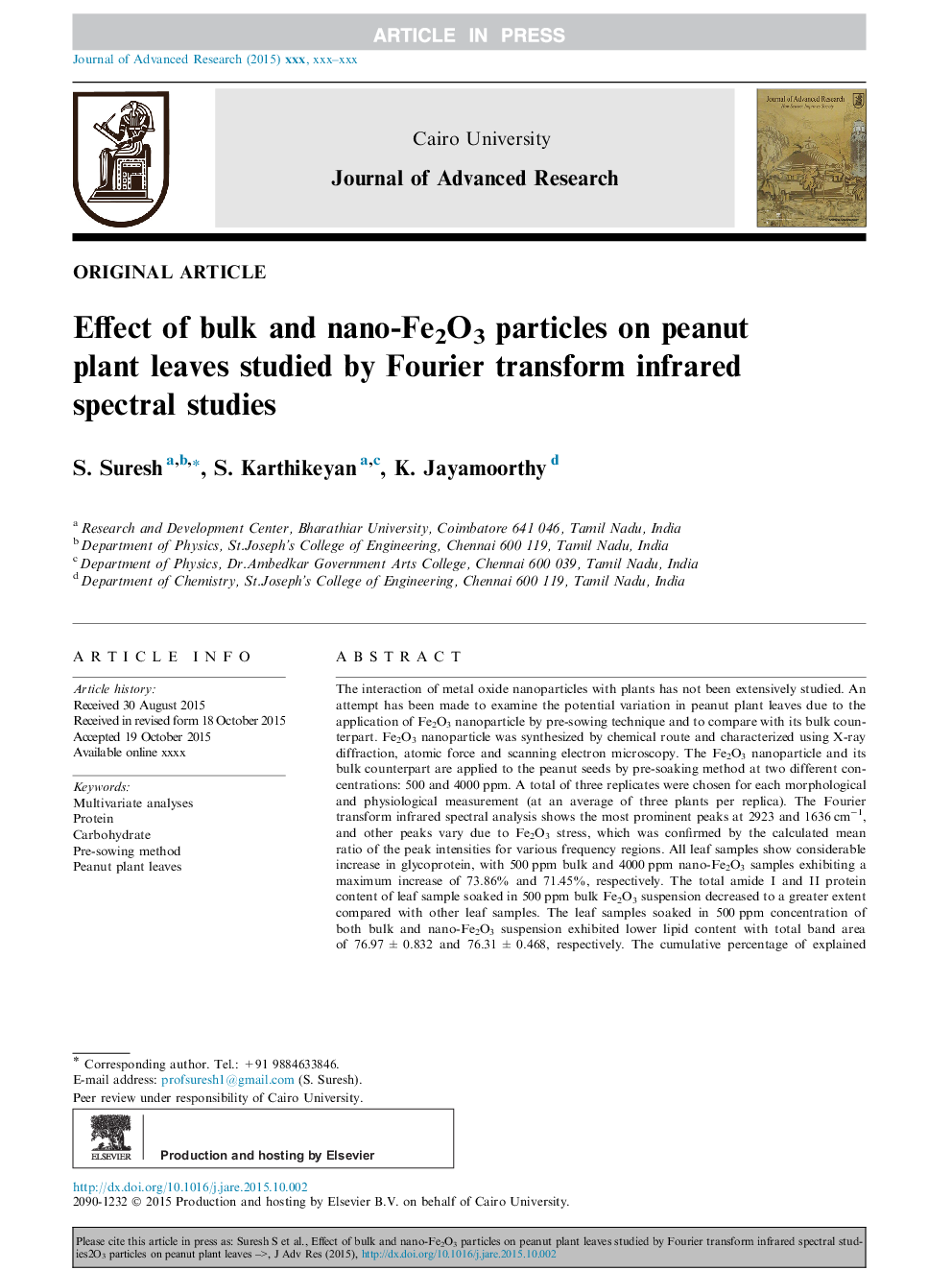| کد مقاله | کد نشریه | سال انتشار | مقاله انگلیسی | نسخه تمام متن |
|---|---|---|---|---|
| 10998027 | 1369772 | 2016 | 9 صفحه PDF | دانلود رایگان |
عنوان انگلیسی مقاله ISI
Effect of bulk and nano-Fe2O3 particles on peanut plant leaves studied by Fourier transform infrared spectral studies
دانلود مقاله + سفارش ترجمه
دانلود مقاله ISI انگلیسی
رایگان برای ایرانیان
کلمات کلیدی
موضوعات مرتبط
مهندسی و علوم پایه
شیمی
شیمی (عمومی)
پیش نمایش صفحه اول مقاله

چکیده انگلیسی
The interaction of metal oxide nanoparticles with plants has not been extensively studied. An attempt has been made to examine the potential variation in peanut plant leaves due to the application of Fe2O3 nanoparticle by pre-sowing technique and to compare with its bulk counterpart. Fe2O3 nanoparticle was synthesized by chemical route and characterized using X-ray diffraction, atomic force and scanning electron microscopy. The Fe2O3 nanoparticle and its bulk counterpart are applied to the peanut seeds by pre-soaking method at two different concentrations: 500 and 4000 ppm. A total of three replicates were chosen for each morphological and physiological measurement (at an average of three plants per replica). The Fourier transform infrared spectral analysis shows the most prominent peaks at 2923 and 1636 cmâ1, and other peaks vary due to Fe2O3 stress, which was confirmed by the calculated mean ratio of the peak intensities for various frequency regions. All leaf samples show considerable increase in glycoprotein, with 500 ppm bulk and 4000 ppm nano-Fe2O3 samples exhibiting a maximum increase of 73.86% and 71.45%, respectively. The total amide I and II protein content of leaf sample soaked in 500 ppm bulk Fe2O3 suspension decreased to a greater extent compared with other leaf samples. The leaf samples soaked in 500 ppm concentration of both bulk and nano-Fe2O3 suspension exhibited lower lipid content with total band area of 76.97 ± 0.832 and 76.31 ± 0.468, respectively. The cumulative percentage of explained variance in secondary structure of protein of all leaf samples is 83.888% in which factor 1 accounts for 51.870% and factor 2 accounts for 32.018% of the total data variance. The principal component (PC) loadings plot for the spectral range 1600-1700 cmâ1 clearly shows that the PC1 factor might establish the maximum variation of the secondary structure of protein in leaf samples.
ناشر
Database: Elsevier - ScienceDirect (ساینس دایرکت)
Journal: Journal of Advanced Research - Volume 7, Issue 5, September 2016, Pages 739-747
Journal: Journal of Advanced Research - Volume 7, Issue 5, September 2016, Pages 739-747
نویسندگان
S. Suresh, S. Karthikeyan, K. Jayamoorthy,